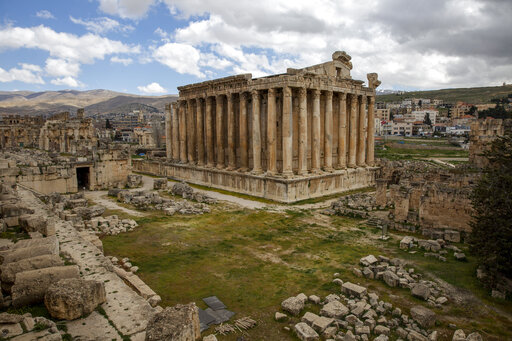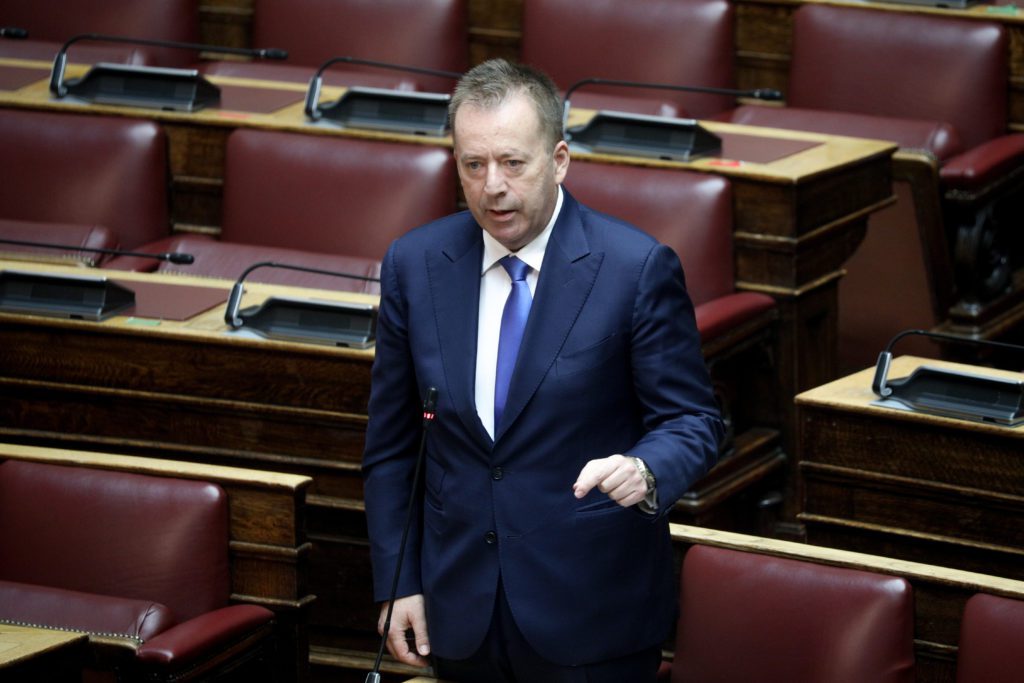Unesco announced today that it is placing under “temporary enhanced protection” 34 cultural sites in Lebanon threatened by Israeli bombardment and that it is providing emergency financial assistance to save the country’s cultural heritage.
These cultural properties, including the world heritage sites of Baalbek and Tyre, “henceforth have the highest level of immunity from attack and military use,” according to the organization’s statement. of the United Nations for Science, Culture and Education.
“Failure to comply with these conditions constitutes a serious violation of the 1954 Hague Convention (for the protection of cultural property in the event of armed conflict, s.b.) and opens the possibility of prosecution”, warns Unesco. Israel continues its killing spree as the war rages since September 23 against Lebanon’s Shiite Islamist movement Hezbollah.
Among the goods mentioned are mainly the archaeological sites of Baalbek and Tyre, which are registered in the world cultural heritage, and “near them blows were observed recently”, according to Unesco.
Other sites and monuments that exist in millennial cities that are affected by this decision are Sidon, Anjar, Beiteddin Palace and the National Museum of Beirut.
Extraordinary meeting
This decision is taken after the “emergency meeting” today of the Commission for the protection of cultural property in the event of armed conflict, at the request of Lebanon, at the Unesco offices in Paris.
It was preceded by a request to Unesco by 300 personalities from the field of culture, including archaeologists and academics, who on Sunday called on Unesco to guarantee the protection of Lebanon’s cultural heritage.
Reacting to Unesco’s decision, Lebanese Prime Minister Najib Mikati hailed in a statement “a victory for justice and a resounding slap in the face to the Israeli enemy that continues its destructive attacks against Lebanon.”
“This decision constitutes a powerful means of deterrence against the Israeli enemy as it characterizes any attack against the archaeological sites as a war crime, justifying the prosecution of those responsible before international courts,” he added.
“Unesco maintains a deep and long-standing partnership with Lebanon. We will exhaust our efforts to offer all the necessary know-how and help to protect its outstanding cultural heritage”, said Unesco director-general Audrey Azoulet.
Read also:
“Beware you will be watched”: Concerns ahead of the new Trump era in the US
President – CEO Trump – Can a crony-backed tycoon make policy for the weakest?
Poll: Who would the Greeks vote for president in the USA? – The contradictions and the… surprises
!function(f,b,e,v,n,t,s)
{if(f.fbq)return;n=f.fbq=function(){n.callMethod?
n.callMethod.apply(n,arguments):n.queue.push(arguments)};
if(!f._fbq)f._fbq=n;n.push=n;n.loaded=!0;n.version=’2.0′;
n.queue=[];t=b.createElement(e);t.async=!0;
t.src=v;s=b.getElementsByTagName(e)[0];
s.parentNode.insertBefore(t,s)}(window, document,’script’,
‘
fbq(‘init’, ‘726515947549353’);
fbq(‘track’, ‘PageView’);
#Lebanon #Unesco #puts #archaeological #sites #increased #protection #military #attacks
What are the specific cultural sites in Lebanon that are receiving enhanced protection from UNESCO?
Welcome to World Today News. We are pleased to have Ms. Emily Brown, a prominent archaeologist, and Dr. Samantha Davis, a cultural heritage expert, with us today to discuss Unesco’s decision to place 34 cultural sites in Lebanon under “temporary enhanced protection” due to the ongoing conflict with Israel. Ms. Brown, as an expert in archaeology, can you tell us more about the importance of these sites to Lebanon’s cultural heritage and why it’s crucial for them to receive increased protection?
Emily Brown: Certainly. The two world heritage sites of Baalbek and Tyre, along with the other monuments and historical sites mentioned in the article, are invaluable pieces of Lebanon’s cultural identity. They offer a glimpse into the country’s rich history and serve as a source of pride for its citizens. It’s essential that these sites are not only protected from physical damage but also from any military activity that could threaten their integrity and existence. Their cultural significance transcends borders and should be preserved for generations to come.
Dr. Samantha Davis, as a cultural heritage expert, what are your thoughts on the potential long-term implications of this decision for both Lebanon and the international community?
Dr. Samantha Davis: This is a significant step forward in the preservation of cultural heritage during armed conflicts. The decision by Unesco showcases the importance of protecting cultural properties and sends a strong message to countries engaged in such conflicts. It also highlights the importance of international cooperation and support in protecting these sites. In the long run, it could pave the way for more effective protection measures globally and may lead to greater recognition of the value of cultural heritage in peacebuilding efforts.
Ms. Brown, you mentioned that there have been recent strikes near some of these sites. Can you elaborate on the concerns regarding potential damage to these historical landsmarks?
Emily Brown: The archaeological sites in question are centuries old and have already endured significant wear and tear over time. Any military activity in their proximity, including shelling and airstrikes, poses a grave threat to their survival. Even minor damage could lead to irreparable harm, as evidenced by the destruction of the Buddhas of Bamyan in Afghan


